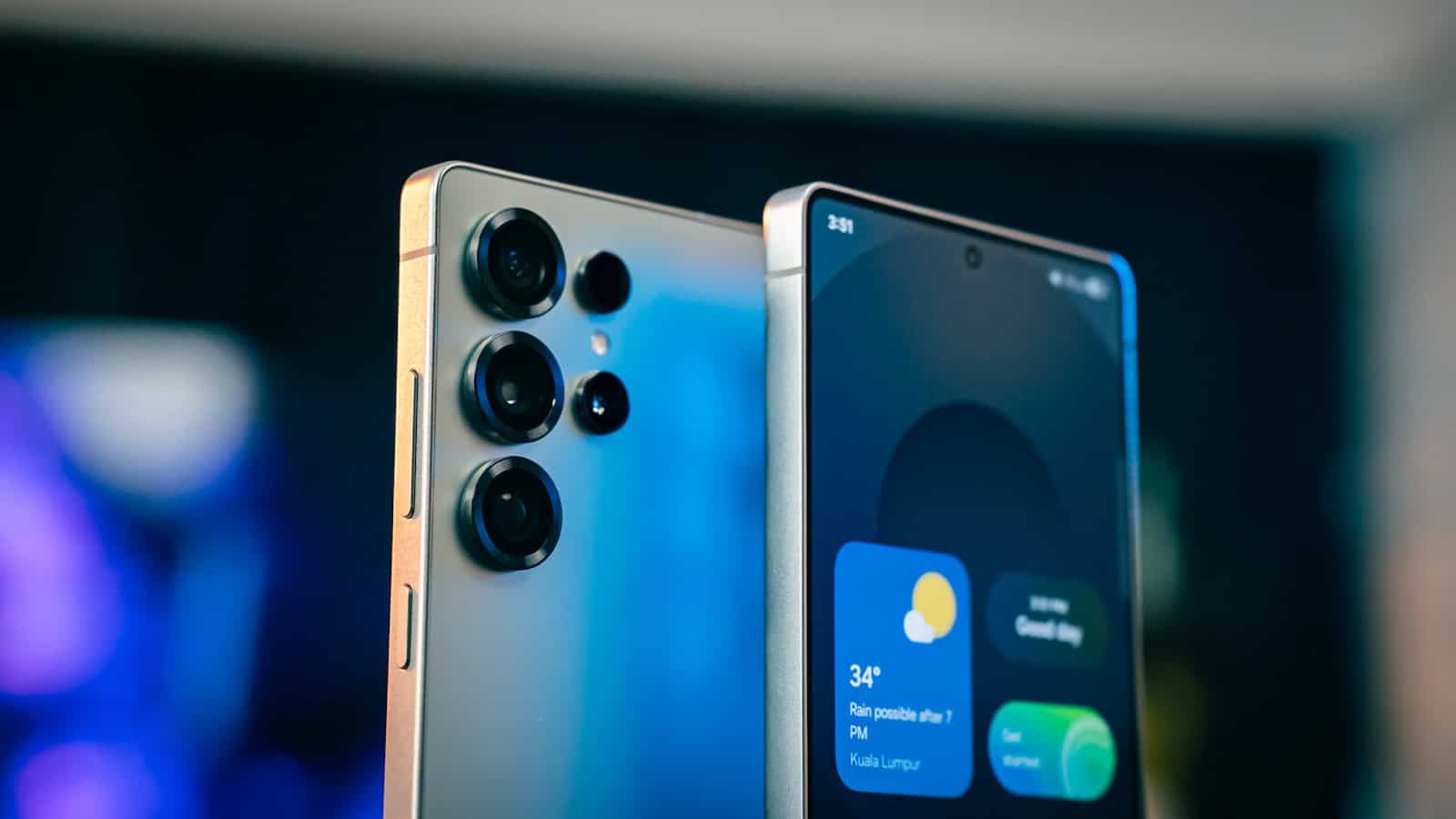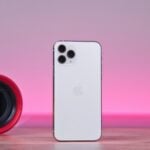Switching to a new Android phone often means moving your apps, photos, contacts, and more. The process has become much simpler over the years thanks to built-in transfer tools. You can quickly transfer data between Android phones by connecting them wirelessly, signing in to your Google account, and selecting what content you want to copy.
There are several methods available for transferring your data. The most common approach involves using Google’s built-in transfer tool that guides you through connecting your devices and copying selected content. For those who prefer alternatives, you can also use a cable connection for faster transfers or back up your data to Google’s servers first.
How To Transfer Your Data to a New Android Device
Getting a new Android phone is exciting, but moving your data over doesn’t have to be a hassle. Android makes it easy to transfer everything — including contacts, apps, photos, messages, and settings — from your old device to your new one. Here’s a step-by-step guide to help you make the switch smoothly.
1. Charge Both Devices
Before starting, make sure both your old and new phones are charged to at least 50%. You don’t want either device dying during the transfer.
2. Use the Built-in Android Setup Tool
When you first turn on your new Android device:
- Select your language and connect to Wi-Fi.
- When prompted, choose Copy apps and data.
- Select Using a cable or Using a backup from the cloud depending on what’s available to you.
If Using a Cable (Recommended):
- Connect the two phones with a USB-C to USB-C or USB-C to USB-A cable and adapter.
- Follow the on-screen instructions on both phones.
- Select the data you want to copy (apps, messages, call logs, photos, etc.).
- Wait for the transfer to complete. It may take a while depending on the amount of data.
If Using a Cloud Backup:
- On your old phone, go to Settings > Google > Backup and make sure Backup by Google One is turned on and updated.
- On the new phone, choose to restore from your Google Account during setup.
- Select the correct backup and confirm what you want to restore.
This method works well if your old phone is no longer available or you want to set up your phone without a cable.
3. Transfer Photos and Videos with Google Photos
- On your old phone, open the Google Photos app and ensure everything is backed up (Settings > Backup & sync).
- Install Google Photos on your new device and sign in with the same Google account — your media will sync automatically.
4. Transfer WhatsApp Chats (Optional)
- On your old phone, open WhatsApp > Settings > Chats > Chat Backup and back up to Google Drive.
- On the new phone, install WhatsApp and sign in with the same number.
- When prompted, restore from the Google Drive backup.
5. Move Files with Nearby Share
If you need to transfer specific files manually:
- Enable Nearby Share on both phones from Settings > Google > Devices & Sharing.
- Select a file (photo, video, document) on your old device.
- Tap Share > Nearby Share and choose your new device when it appears.
6. Sign Back Into Apps
After the main transfer is done, open each app on your new phone and sign back in as needed. Some apps may require two-factor authentication or SMS verification.
7. Double-Check What Didn’t Transfer
Not all settings and app data carry over automatically. You might need to:
- Re-download music or offline media
- Re-pair Bluetooth devices
- Log into email or banking apps again
Transferring your data to a new Android device is a straightforward process if you follow the prompts and use the built-in tools. Within an hour or two, your new phone should feel just like home.
Key Takeaways
- Android’s wireless transfer tool lets users copy apps, photos, and settings between devices in just a few minutes.
- Google account backup provides an alternative method for transferring data when direct device connections aren’t possible.
- Cable connections offer faster transfer speeds for moving large amounts of data like photos and videos.
Understanding the Basics of Android Data Transfer
Moving your personal information from one Android device to another is simpler than most people think. Android offers several built-in options that make the transfer process straightforward, even for those who aren’t tech-savvy.
Types of Data You Can Transfer
Android allows users to transfer various types of data between devices. Contacts are usually the most critical information people want to move, along with text messages that might contain important conversations or verification codes.
Photos and videos can take up significant storage space but are often irreplaceable memories that users want to preserve. Most transfer methods also handle music files and downloaded content.
Apps and app data can be transferred, including game progress and login information in many cases. Calendar events, bookmarks, and even Wi-Fi passwords can move to a new device.
Some methods also transfer system settings and home screen layouts, making the new phone feel familiar right away.
Transfer Requirements and Preparation
Before starting any transfer, both Android devices should be:
- Charged to at least 50% battery life
- Connected to a stable Wi-Fi network
- Updated to their latest operating system version
Back up your old phone first as a precaution. Go to Settings > System > Backup to ensure your Google Account is backing up your data.
Make sure you have your Google Account credentials handy, as this account is central to most transfer methods. If your phones use different Android versions, some compatibility issues might arise.
Clear unnecessary files from your old device to speed up the transfer process. Remove apps you no longer use and delete duplicate photos or videos.
Selecting the Right Transfer Method
Android offers several ways to move data between devices:
- Google’s built-in transfer tool – The simplest option during new phone setup that works wirelessly
- Google account synchronization – Automatically transfers contacts, calendar, and app data
- Manufacturer-specific apps – Samsung Smart Switch or similar tools from other phone makers
- Third-party transfer apps – Available on Google Play Store for specialized transfers
For small amounts of data, direct sharing via Bluetooth or Nearby Share works well. Large transfers with many photos and videos benefit from using a USB cable connection, which is faster than wireless methods.
Your choice depends on how much data you’re moving and whether both devices are physically present. The built-in transfer tool during setup provides the most comprehensive solution for most users.
Step-by-Step Data Transfer Methods
Transferring data between Android devices has become more streamlined with multiple options available to users. These methods vary in complexity and functionality, offering flexibility based on your specific needs and technical comfort level.
Using Google Services for Data Syncing
Google services provide a seamless way to transfer essential data between Android devices. When setting up a new phone, users can sign in with their Google account to automatically sync contacts, calendars, emails, and app data.
To use this method:
- On the new device, sign in with the same Google account used on the old device
- During setup, select the option to restore from Google backup
- Choose which data to restore (apps, settings, Wi-Fi passwords)
Photos and videos can be transferred using Google Photos by enabling backup on the old device. Google Drive also allows manual backup of important files that can be accessed later on the new device.
This method works best for users who regularly back up their data to Google’s services. However, it may not transfer some app-specific data or text messages without additional steps.
Wireless Transfer via Wi-Fi or Bluetooth
Wireless transfer methods offer convenient options without requiring physical connections between devices.
For Wi-Fi transfer:
- Enable both devices to connect to the same Wi-Fi network
- During new device setup, select the option to copy apps and data wirelessly
- Follow on-screen prompts to establish a connection between devices
- Select the content you wish to transfer
Bluetooth transfers work for smaller files but are slower for large data transfers:
- Pair both devices via Bluetooth settings
- Select files to share on the old device
- Choose the new device as the destination
Many Android manufacturers offer their own wireless transfer tools like Phone Clone or Smart Switch. These proprietary tools typically provide more comprehensive transfers including app data, system settings, and other device-specific information.
Connection stability is important during wireless transfers. Keep devices close together and avoid interruptions during the process.
Utilizing Data Transfer Apps
Specialized data transfer apps can simplify the migration process and offer more control over what gets transferred.
Popular data transfer apps include:
- Phone Clone (Huawei)
- Smart Switch (Samsung)
- Xender
- SHAREit
To use these apps:
- Install the same transfer app on both devices
- Launch the app and identify sender/receiver roles
- Select the content categories to transfer
- Begin the transfer process and wait for completion
These apps typically handle a wide range of data including contacts, messages, photos, videos, music, apps, and calendar entries. Most create direct connections between devices through their own Wi-Fi networks.
Some apps require PIN codes for secure pairing. Be sure to verify the connection is legitimate before transferring sensitive data. Transfer speeds vary based on file sizes and device capabilities.
Nearby Share Functionality
Nearby Share is Google’s built-in solution for quick data transfers between Android devices. This feature works similarly to Apple’s AirDrop.
To use Nearby Share:
- Enable the feature in the Settings or Quick Settings panel on both devices
- Select content to share on the old device
- Tap the Share icon and select Nearby Share
- Choose the receiving device when it appears
The service uses a combination of Bluetooth, Wi-Fi, and NFC to establish the fastest available connection. Users can control visibility settings to determine who can see their device for sharing.
Nearby Share works best for transferring specific files rather than complete device migrations. The technology automatically selects the best protocol based on file size and connection options.
For privacy, users can set visibility preferences to contacts only, some contacts, or hidden. Transfers are encrypted, making this a secure option for sending sensitive documents between devices.
Frequently Asked Questions
Many Android users have common questions about transferring data between devices. These practical solutions can help make the process smoother and ensure all important information moves correctly.
What are the steps to transfer all my data from my old Android phone to my new Android phone?
To transfer all data from an old Android phone to a new one, users can follow a simple process. First, turn on both devices and ensure they’re connected to Wi-Fi.
Next, during the setup of the new phone, select the option to copy apps and data from another device. This usually appears early in the setup process.
For many newer Android phones, Google’s built-in transfer tool will guide users through wirelessly connecting both devices. Alternatively, Samsung users can use Smart Switch, which works with a USB cable for more reliable transfers.
Can I transfer my Android phone data wirelessly, and if so, how is it done?
Wireless data transfer between Android devices is possible and often the most convenient method. The process begins when setting up the new device – users should select “Copy apps and data” when prompted.
Both phones need to be connected to the same Wi-Fi network. The old phone will generate a code that must be entered on the new device to establish a secure connection.
Once connected, users can select which data to transfer, including apps, photos, contacts, and settings. The process may take several minutes to complete depending on the amount of data.
What are the best apps available for transferring data from one Android device to another?
Google’s built-in transfer tool comes pre-installed on most modern Android devices and handles most transfer needs effectively. It transfers apps, contacts, messages, photos, and account settings.
Samsung Smart Switch is excellent for Samsung device owners, offering comprehensive data transfer capabilities. It works both wirelessly and via USB cable connections.
For specific content types, specialized apps like Send Anywhere or Files by Google provide simple ways to transfer selected files between devices without moving everything at once.
Before switching to a new Android phone, what essential actions should I take to ensure a smooth data transfer?
Before switching phones, users should verify their Google account is properly syncing important data. Checking Settings > Accounts > Google will show which data types are being backed up.
All critical data should be backed up to Google Drive or another cloud service. This creates a safety net if the direct transfer encounters problems.
Users should also make sure both devices have sufficient battery life before beginning the transfer process. At least 50% battery is recommended, or keeping devices plugged in during transfer.
Are there any methods to transfer data between Android devices without incurring any costs?
Transferring data between Android devices is typically free using built-in methods. Google’s transfer tool and backup services come pre-installed and use Wi-Fi for transfers without any fees.
Local transfer apps like Files by Google allow users to send and receive files directly between devices without using cellular data or paying for cloud storage.
For larger transfers, using a computer as an intermediary with USB cables is completely free and often faster than wireless methods.
How can I utilize the ‘Set up my device’ feature to move data from my old Android to a new one?
The ‘Set up my device’ feature starts automatically when powering on a new Android phone for the first time. After selecting language and connecting to Wi-Fi, the option to transfer data appears.
Users should select “Copy apps and data” rather than setting up as a new device. The system then provides instructions for connecting the old device, either by scanning a QR code or entering a code.
Once connected, users can choose exactly which content to transfer. The system will show categories like apps, call history, device settings, and Google account data, allowing selective transfers to save time.







